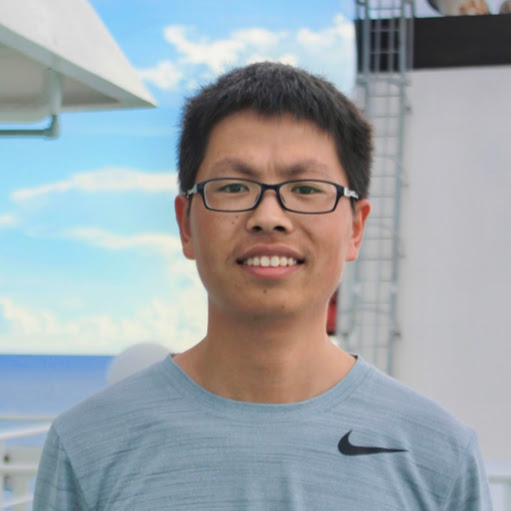Eric S Yan
age ~63
from Erie, PA
- Also known as:
-
- Suming Yan
- Eric S Van
- Summing Yan
- Phone and address:
-
4173 Stone Creek Dr, Erie, PA 16506
8148333412
Eric Yan Phones & Addresses
- 4173 Stone Creek Dr, Erie, PA 16506 • 8148333412
- 1865 Royal Fern Ln, Orange Park, FL 32003 • 9042782593
- Fleming Island, FL
- Jacksonville, FL
- Blacksburg, VA
Us Patents
-
High-Tension Electrostatic Classifier And Separator, And Associated Method
view source -
US Patent:6797908, Sep 28, 2004
-
Filed:Apr 10, 2002
-
Appl. No.:10/120017
-
Inventors:Eric S. Yan - Orange Park FL
Thomas J. Grey - Jacksonville FL
Kevin R. McHenry - Jacksonville FL -
Assignee:Outokumpu Oyj - Espoo
-
International Classification:B03C 706
-
US Classification:209131, 2091271, 2091274, 209128, 209129, 209130
-
Abstract:The electrostatic classifier and separator is supported by a housing and includes a corona classifier section for classifying particulate materials according to size. Corona element supplies mobile ions for bombarding particulate materials dropping down a passageway from a reservoir. A splitter and screen may be included in the passageway to direct particulate materials into respective fractions. First separator section receives fine to middle size fractions and second separator section receives middle to coarse size fractions. A support frame having adjustable slots supports a plurality of static electrodes. Corona element for emitting a corona charge is spaced generally in a first quadrant of first separator section. A rotatable brush and an alternating current wiper may be included for removing fine to middle size nonconductive fractions from first separator section. Additional splitter and/or a baffle may be included to help guide particulate material fractions into respective containers, onto a conveyor belt or the like.
-
Corona And Static Electrode Assembly
view source -
US Patent:6951992, Oct 4, 2005
-
Filed:Feb 27, 2003
-
Appl. No.:10/376190
-
Inventors:Eric S. Yan - Orange Park FL, US
Kevin R. McHenry - Jacksonville FL, US -
Assignee:Outokumpu Oyj - Espoo
-
International Classification:B03C007/01
-
US Classification:2091271, 209128, 2091272, 209130, 209129
-
Abstract:A corona and static electrode assembly is attachable to a frame of an existing electrostatic separator and includes a pair of oppositely spaced end panels and an elongate corona support member disposed inwardly of and supported by the respective end panels. The corona support member is preferably formed from a single piece of rigid material and has a substantially L-shape for directing an electrostatic field intensity towards the outer surface of a rotating drum. A pair of spaced spacers are connected to and laterally extend from the corona support member and an elongate conductive wire extends between the pair of spacers. The wire is preferably supported between the spacers and threaded bolts passing therethrough, respectively, can adjust its tension. A plurality of elongate static electrodes are spaced from the wire and are connected between the pair of end panels. The assembly may further include a pair of end shields, a pair of support members and an elongate support member for assisting to maintain the corona support member and static electrodes in a fixed position and for attaching the assembly to a frame of an existing electrostatic separator.
-
Spark Induction Power Conditioner For High Tension Physical Separators
view source -
US Patent:7045734, May 16, 2006
-
Filed:Nov 21, 2003
-
Appl. No.:10/718844
-
Inventors:Eric S. Yan - Orange Park FL, US
Thomas J. Grey - Jacksonville FL, US -
Assignee:Outokumpu Oyj - Espoo
-
International Classification:B03C 7/01
-
US Classification:2091271, 209128, 209129, 209130, 209131
-
Abstract:A D. C. voltage altering device includes at least one spark induction power conditioner including a first electrode connectable to a high voltage D. C. power source and a second electrode spaced from the first electrode and forming a discharging gap therebetween. The second electrode is connectable to a predetermined section of a physical separator and at least one of the electrodes is selectively positionable for altering spatial distance between same. The power conditioner induces a predetermined large amplitude, high frequency current ripple to the second electrode for creating a fluctuating voltage and fluctuating electrostatic field and maintaining continuous current flow through the gap without reversal of polarity. The spark induction power conditioner further includes a dielectric base for housing the electrodes and a plurality of fastening members threadably positionable through the base and engageable with the electrodes so that the discharging gap between the electrodes can be selectively adjusted.
-
High-Tension Electrostatic Separator Lifting Electrode
view source -
US Patent:7973258, Jul 5, 2011
-
Filed:Jan 30, 2009
-
Appl. No.:12/362534
-
Inventors:Eric S. Yan - Erie PA, US
Michael Mankosa - Erie PA, US
Jaisen Kohmuench - Erie PA, US -
Assignee:Eriez Manufacturing Co. - Erie PA
-
International Classification:B03C 7/00
-
US Classification:209129, 209 121, 209 122, 2091271, 209128, 209130
-
Abstract:A lifting electrode for a high-tension electrostatic separator. The high tension electrostatic separator having a rotating drum that is connected to ground and an ionizing electrode that generates a corona discharge of charged ions. The lifting electrode comprising a composite of a non-conductive polymer impregnated with conductive particles.
-
Magnetic Separator With Electrostatic Enhancement For Fine Dry Particle Separation
view source -
US Patent:20050092656, May 5, 2005
-
Filed:Nov 4, 2003
-
Appl. No.:10/700704
-
Inventors:Eric Yan - Orange Park FL, US
Bo Arvidson - Ponte Vedra Beach FL, US -
International Classification:B04B005/10
-
US Classification:209012200, 209218000
-
Abstract:A magnetic separation system for separating magnetic from non-magnetic particles employing a dry drum/belt magnetic separator includes an electrostatic separator, including electrodes located closely adjacent a moving belt overlying the magnetic drum for attracting charged non-magnetic particles on the belt to remove such particles from the belt. The electrodes are formed as an elongate metal rod coated with a non-electrically conductive material. The rods are positioned lengthwise in a manner such that the rod is substantially transverse the direction of movement of the belt. The system also includes an ionizer for creating an ion cloud directed toward a surface of the belt for electrically neutralizing the surface of the belt.
-
Flotation Separation Device And Method
view source -
US Patent:20080251427, Oct 16, 2008
-
Filed:Apr 11, 2008
-
Appl. No.:12/101376
-
Inventors:Michael J. Mankosa - Erie PA, US
Jaisen Kohmuench - Erie PA, US
Eric S. Yan - Erie PA, US
Gerald H. Luttrell - Blacksburg VA, US -
International Classification:B03D 1/14
B03D 1/24
B03D 1/16
B01F 3/04
C10J 1/08 -
US Classification:209164, 209170, 2611211, 261 93
-
Abstract:A flotation separation system is provided for partitioning a slurry that includes a hydrophobic species which can adhere to gas bubbles formed in the slurry. The flotation separation system comprises a flotation separation cell that includes a sparger unit and a separation tank. The sparger unit has a slurry inlet for receiving slurry and a gas inlet to receive gas with at least enough pressure to allow bubbles to form in the slurry within the sparger unit. The sparger unit includes a sparging mechanism constructed to disperse gas bubbles within the slurry. The sparging mechanism sparges the gas bubbles to form a bubble dispersion so as to cause adhesion of the hydrophobic species to the gas bubbles substantially within the sparger unit while causing a pressure drop of about 10 psig or less across the sparging mechanism. The sparger unit includes a slurry outlet to discharge the slurry and the bubble dispersion into the separation tank.
-
Electrostatic Separation Apparatus And Method Using Box-Shaped Electrodes
view source -
US Patent:63296233, Dec 11, 2001
-
Filed:Jun 23, 2000
-
Appl. No.:9/603271
-
Inventors:Eric S. Yan - Orange Park FL
Thomas J. Grey - Jacksonville FL
Timo U. Niitti - Ponte Vedra FL -
Assignee:Outokumpu Oyj
-
International Classification:B03C 712
-
US Classification:209129
-
Abstract:This invention relates to an apparatus and method for electrostatically separating particles having different electrostatic properties. The apparatus involves two thin box-shaped electrodes facing each other as mirror-images and charged with a voltage field causing the opposing electrodes to assume opposite charges, and then passing a mixture of particles through the field so as to make the particles travel toward the respective electrodes through a perforated plate or screen and to a solid back plate and then to fall by gravity through a splitter adjusted to separate particles attracted by one charge from particles attracted by another charge. A vibrator is attached to each electrode, which is isolated for movement by spaced vibration isolators to shake off any particles stuck to the electrodes.
-
Electrostatic Method Of Separating Particulate Materials
view source -
US Patent:63201488, Nov 20, 2001
-
Filed:Aug 5, 1999
-
Appl. No.:9/368945
-
Inventors:Oh-Hyung Han - Kwangju, KR
Eric S. Yan - Jacksonville FL
Byung-Wook Park - Pacific A-202 Seoul, KR -
International Classification:B03C 700
-
US Classification:2091273
-
Abstract:A method of separating particulate materials of different properties has been developed. It consists of feeding a mixture of dry, powdered materials to one end of the surface of a planar electrode, which is vibrating to move the particles forward. At least one type of the particulate materials acquires a charge via conduction or triboelectrification. Those particles that acquire charges of the same sign as that of the planar electrode are lifted and collected at the V-shaped counter electrodes installed above. The new separation method is particularly useful for removing unburned carbons from fly ash and any other conducting materials from nonconducting ones.
Medicine Doctors

Eric H. Yan
view sourceDescription:
Dr. Yan graduated from the Tufts University School of Medicine in 2002. He works in Hemet, CA and 3 other locations and specializes in Nephrology and Internal Medicine. Dr. Yan is affiliated with Hemet Valley Medical Center, Inland Valley Medical Center, Loma Linda University Medical Center, Menifee Valley Medical Center and Rancho Springs Medical Center.

Eric H Yan
view sourceSpecialties:
Anesthesiology
Internal Medicine
Internal Medicine

Eric Hing Yan
view sourceSpecialties:
General Practice
Internal Medicine
Nephrology
Internal Medicine
Nephrology
Education:
Tufts University (2002)
Resumes

Eric Yan
view sourceLocation:
Erie, PA
Industry:
Mining & Metals
Work:
Eriez Magnetics
Technical Director
Technical Director
Skills:
Metals
Mining
Software
Mining
Software

Eric Yan
view source
Eric Yan
view sourceLocation:
United States

Eric Yan
view sourceLocation:
United States
Flickr
Youtube
Classmates

Eric Yan
view sourceSchools:
Pasig Catholic College High School Pasig City OR 1993-1997

Pasig Catholic College Hi...
view sourceGraduates:
Jose Florante Santiago (1976-1980),
Eric Yan (1993-1997),
Jose Se (1970-1974),
Ferdinand Calantoc (1994-1998)
Eric Yan (1993-1997),
Jose Se (1970-1974),
Ferdinand Calantoc (1994-1998)

Eric Yan
view source
Eric Weiguo Yan
view source
Eric Kho Yan
view source
Eric Yan Kin Leg
view source
Eric Yan
view source
Eric Yan
view source
Eric Yan Yan
view source
Eric Yan
view sourceGoogleplus

Eric Yan
Work:
RE/MAX - Real estate agent (2005)
RE/MAX Excellence
RE/MAX Excellence

Eric Yan
Work:
Responsys

Eric Yan
Work:
Ricso

Eric Yan

Eric Yan

Eric Yan

Eric Yan

Eric Yan
Plaxo

Eric Yan
view sourceplaceguanyuwo

Eric Yan Wing Lam
view sourceHong Kong
Get Report for Eric S Yan from Erie, PA, age ~63













